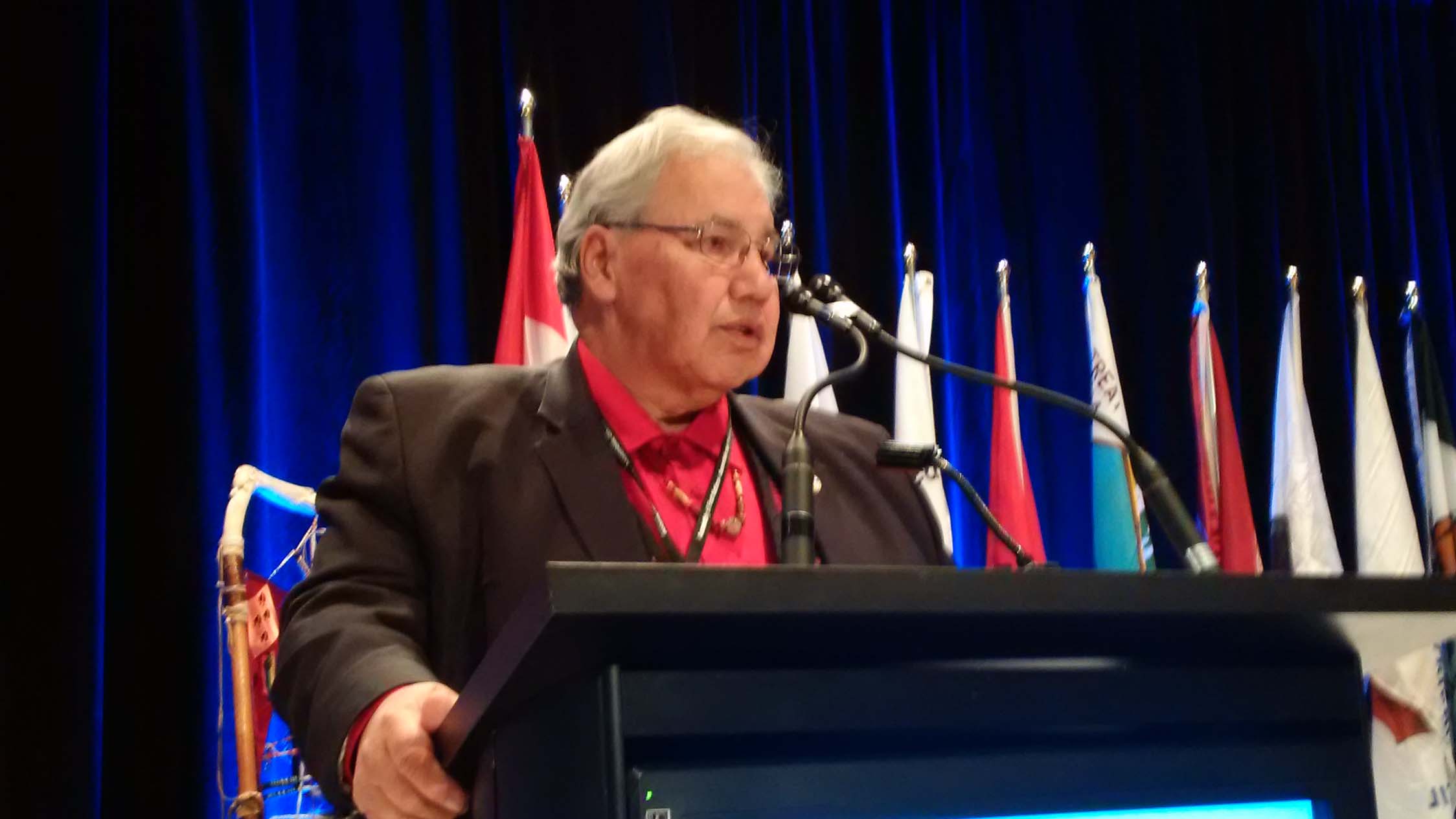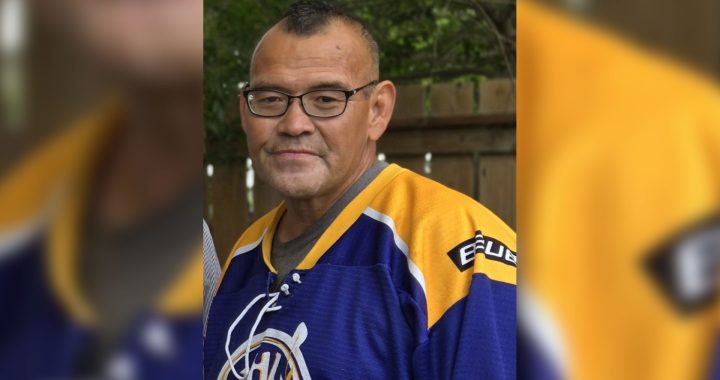
(Truth and Reconciliation Commission Chair Murray Sinclair speaks during the Assembly of First Nations chiefs assembly in Gatineau, Que., Tuesday. APTN/Photo)
Jorge Barrera
APTN National News
Truth and Reconciliation Commission commissioners said Tuesday they were pleased to hear Prime Minister Justin Trudeau again commit his government to move on their 94 recommendations that they say line the path toward reconciliation.
Truth and Reconciliation Commission (TRC) Chair Murray Sinclair said he was cautiously optimistic after hearing the word’s Trudeau delivered during his speech to about 300 chiefs and their proxies gathered at the AFN assembly which is being held at the Lac Leamy Casino in Gatineau, Que.
“First of all they are words. We need to keep that in mind. It is always about action,” said Sinclair. “We are saying to people, you have to make a commitment to doing these things and then you have to do it…I think we are going to see change. As we said in the report and have said in our speeches, we have to be firm and resolute because we recognize it is going to take many generations.”
Trudeau said Tuesday during a speech to open the AFN December chiefs assembly, that his government is committed to implementing the TRC’s recommendations and that his government was committed to building a new relationship with First Nations.
TRC Commissioner Marie Wilson said she was pleased with the tone of Trudeau’s speech.
“I am very happy with the spirit of that statement. I am very happy with the tone of that statement…as long as there is progress being made in partnership and collaboration, I’ll be happy,” said Wilson. “We’ve never assumed that all the 94 calls to action are immediate today, tomorrow activities. They are all things that can be done, some of them are quick and finite in nature, some of them are systemic in their nature. The pledge is very, very important so we need to see what gets done.”

The three TRC commissioners will unveil their final, multi-volume report of their findings on Dec. 15 in Ottawa. The final report, which is already printed, will essentially provide a full and detailed analysis of why the commissioners arrived to the conclusions highlighted in the summary report released in June which informed the TRC’s 94 calls to action.
Sinclair said the TRC will also release audio versions of the summary report released in June translated into six Indigenous languages. He said some of the languages include Mi’kmaq, Ojibway, Cree, Dene and Inuktitut.
“We have so many survivors who don’t like to read or can’t read and we wanted to makes sure we had at least the ability to service some of them,” said Sinclair, in an interview on the sidelines of the Assembly of First Nations special chiefs assembly in Gatineau, Que. “It is like an audible book, word for word translation as much as possible. It will be in a way that will be understandable to people.”
Sinclair said the commission also hopes that schools will use the audio translations as a way to teach Indigenous languages.
Sinclair said the final report contains a breakdown of data supporting the 94 recommendations.
“The final report is going to have all the details, all the charts and tables and all of the graphs, the detailed information that people will need in order to respond to some of the reactions to our calls to action,” said Sinclair. “Some people have been saying we don’t need to do that, or we can keep doing things the same way and it’s not going to be a problem. The data will show what we believe, that to continue on the path we are on is going to result in tremendously increased costs to the child welfare system and to the justice system.”
Sinclair said the data shows that the incarceration rate of Indigenous people has doubled since 1991 and the number of Indigenous children being taken into care is now six times higher than it was in 1990.
“If you keep doing what you are doing and expect to change things, you are crazy,” said Sinclair. “So don’t do the things the same way anymore. Do things differently and here is the data to prove it.”
Wilson said there has already been a strong reaction from all sectors of society committing to act on the commission’s recommendations. She said the final report will also highlight some of this unfolding change.
“What has been less visible to the general Canadian population is how much activity (there has been) in response to those calls to action in almost every sector of society,” said Wilson. “We want that to be held up, we want people to know that there are people stepping forward, and not just individuals, but agencies and associations committing to taking on their chunk of the calls to action and championing those.”
Wilson said the final report will also further examine the gap in data that exists around the number of children who died in residential schools. The TRC created a National Residential Student Register which marked the first time in Canadian history an attempt was made to get a handle on the exact number of student deaths.
The registry has so far tallied about 2,040 deaths between 1867 and 2000 that can be linked to an actual name. That number rises to 3,201 deaths if the records of the unnamed dead are added to the tally. The actual number of deaths may be about 6,000.
“There is a need for further analysis and for that missing children database to be further populated and clarified,” said Wilson. “We talk about that as a particular call to action and we hope it will be taken serious.”
The TRC was created as part of the multi-billion dollar settlement agreement between Ottawa and residential school survivors.
The press conference next week will mark the commission’s final act after a six-year run. Trudeau is expected to attend.
@JorgeBarrera










